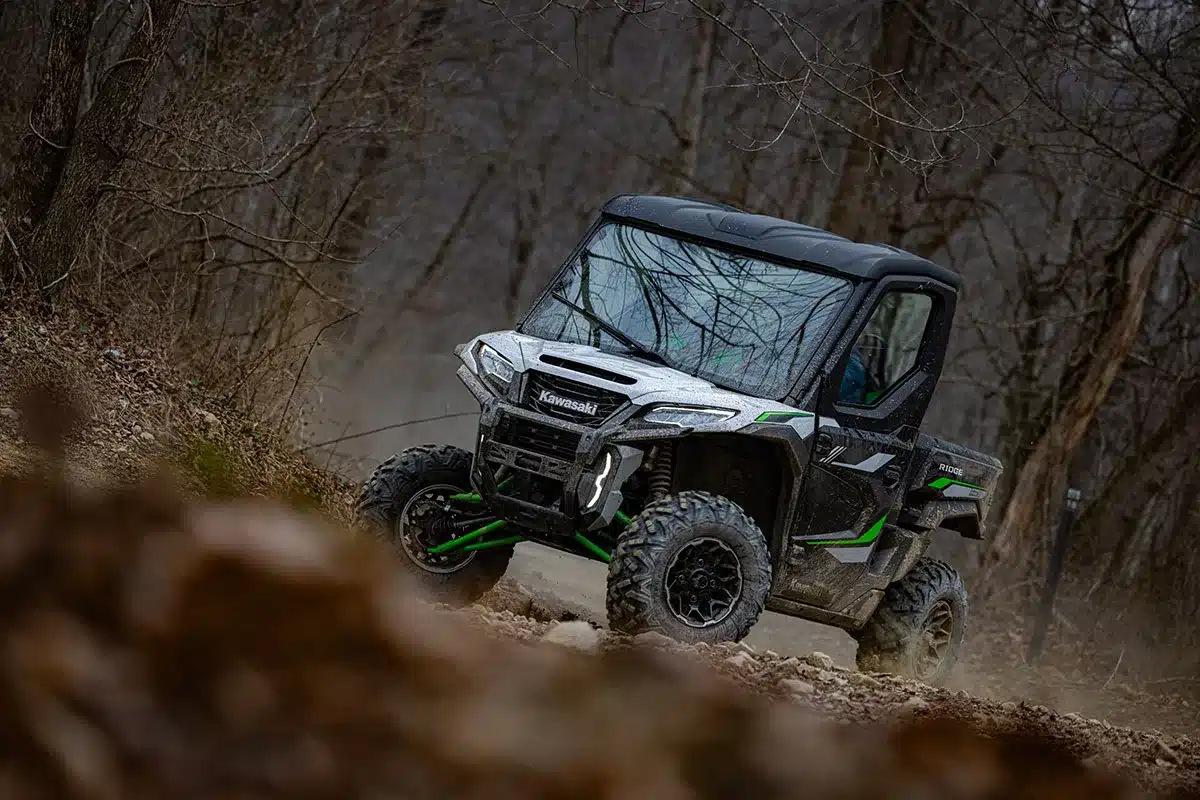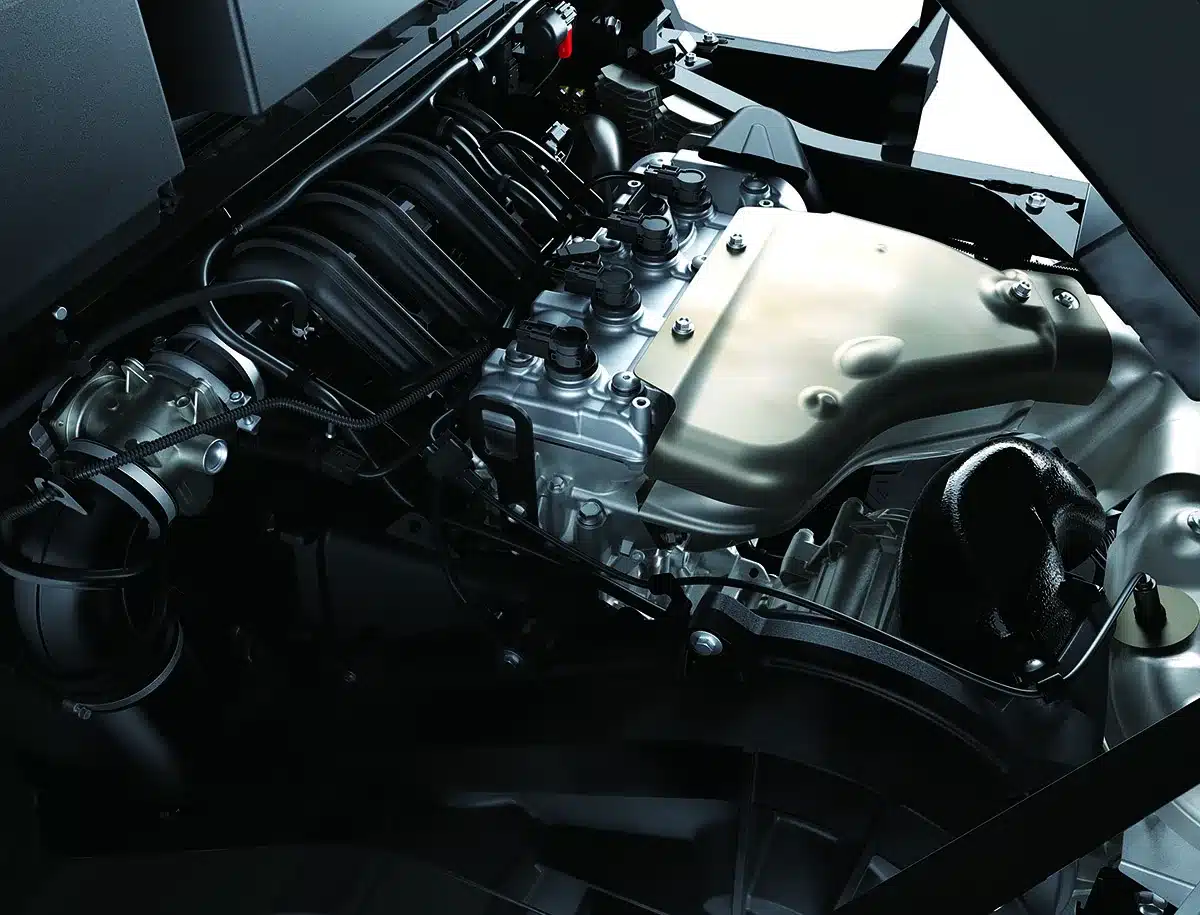Kawasaki’s plan for the Ridge was to create a perfect blend between Utility and Recreation and bridging the gap between their MULE and Teryx SxS models. Recently, we had the opportunity to drive the all-new Kawasaki UTV on West Virginia’s Hatfield McCoy Trail System. Kawasaki provided the All-New 2024 Kawasaki Ridge XR HVAC model, which runs for $31,999, and let us run wild with it on some of the best off-road trails in the country. Here’s our Kawasaki Ridge UTV Review.
Are you trying to decide between the Kawasaki Ridge vs Ridge XR? Here are the primary differences between the new Kawasaki UTV models.
Kawasaki Ridge UTV Review
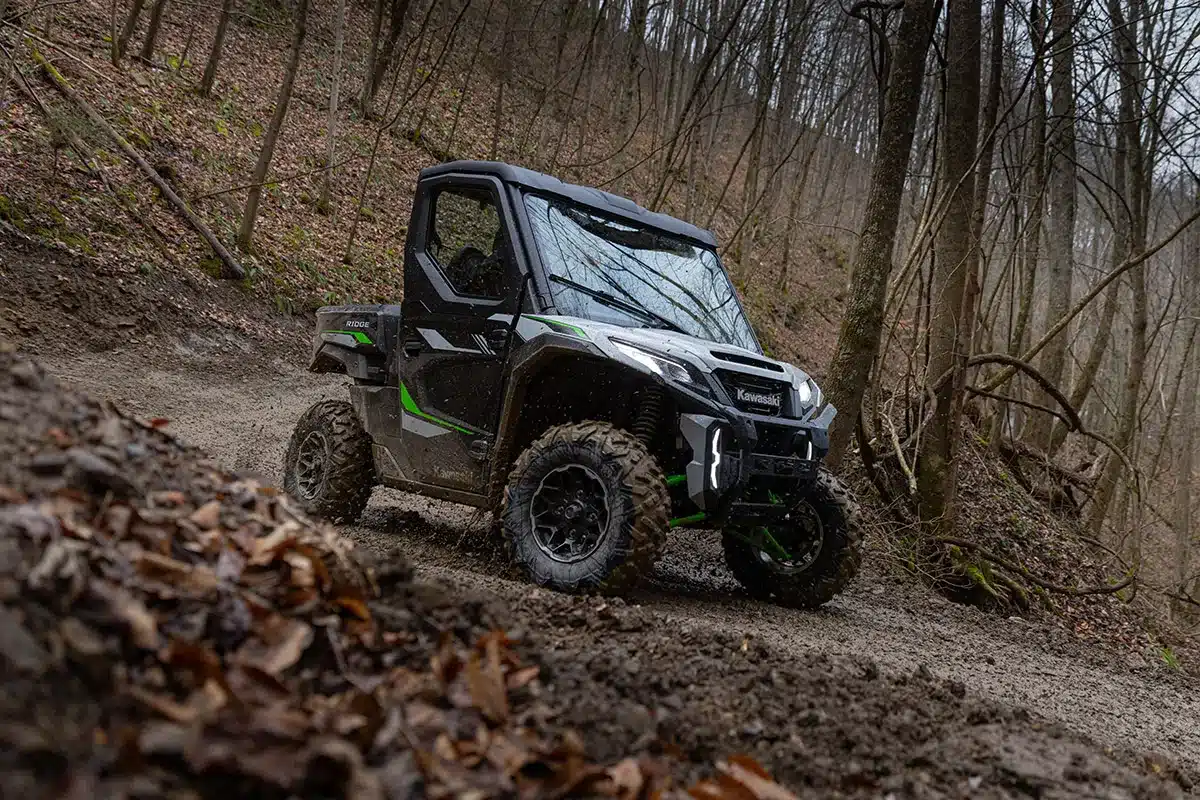
Kawasaki Ridge UTV Review
Driving the Ridge XR HVAC on the Hatfield McCoy Trails!
The All-New Ridge Kawasaki UTV offers a bunch of firsts for the popular powersports brand. The Ridge features Kawasaki’s first 999c in-line four cylinder engine designed specifically for a side-by-side. This is also the first time Kawasaki has offered a profiled ROPS, which allowed for a flush-mounted windshield paneling for the cab enclosure. The Ridge HVAC model, that we tested, is also Kawasaki’s first Factory Cab delivered straight from the assembly line to the dealership with full Heating, Ventilation and Air Conditioning (HVAC) control.
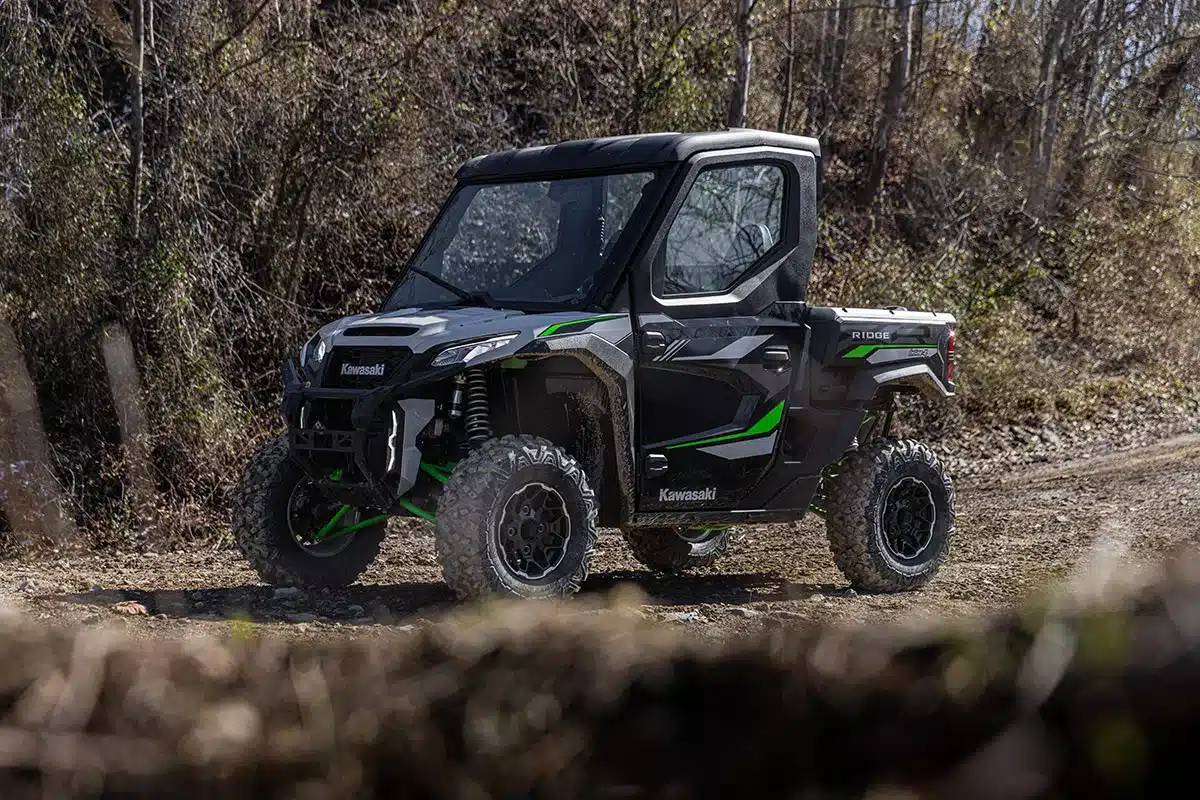
Kawasaki Ridge UTV Review
2024 Kawasaki Ridge XR HVAC Highlights:
- Kawasaki’s First UTV-Specific 4-Stroke In-Line Four Cylinder Engine
- Full Cab with HVAC and Roomy Interior Comfort
- On the Fly Electrically Selectable 4WD & Front-Rear Differential Lock
- 30-inch Tires with 14-inch Aluminium Wheels
- Kawasaki STRONG Three-Year Limited Warranty
- All-LED Exterior Lighting including Accent Lights
- Power Mode Selection
- Chassis Designed for Comfort
- 1000-lbs Capacity Tilting Cargo Bed with Detachable Tailgate
- 7-inch Full-color TFT Instrumentation
- Adjustable driver seat
- Automotive-Inspired Fit & Finish Exterior and Interior
- Smartphone Connectivity via RIDEOLOGY THE APP POWERSPORTS
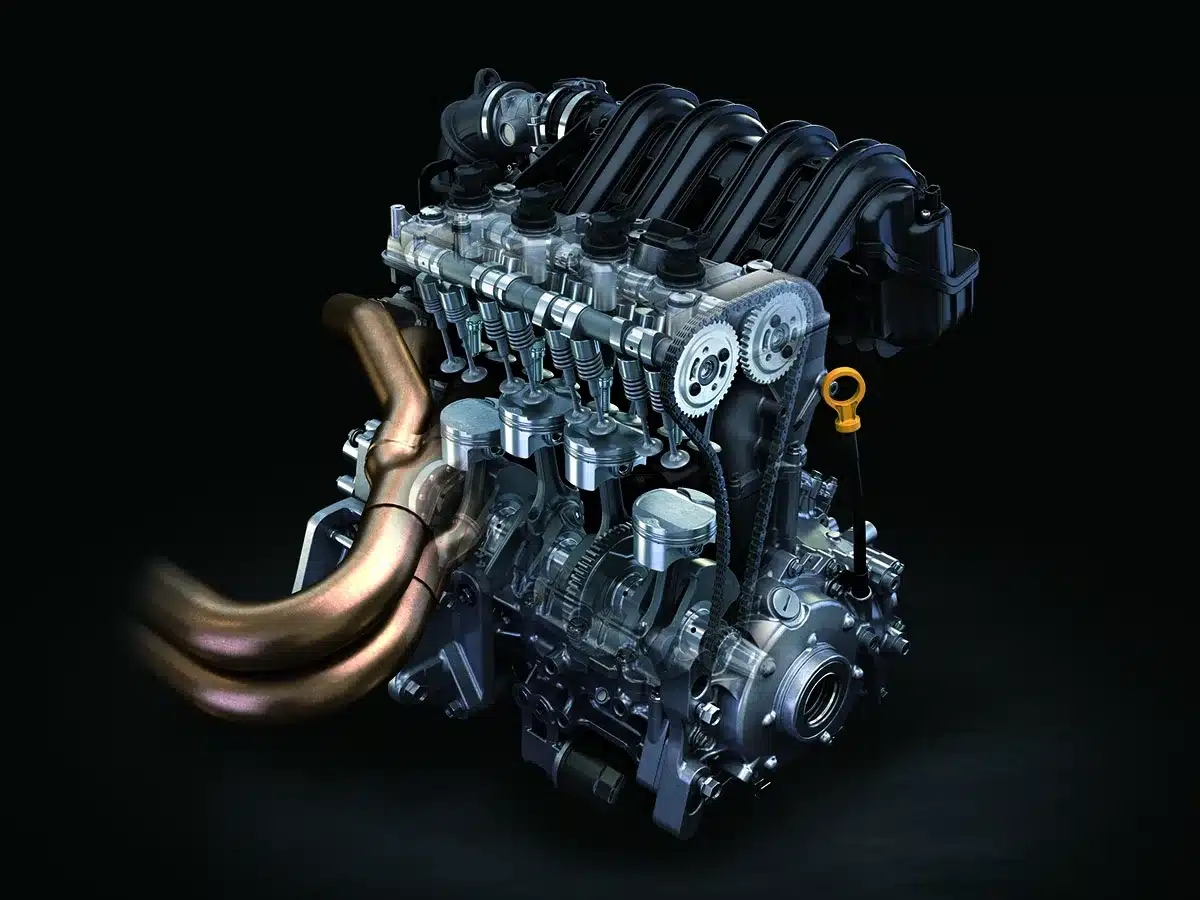
Kawasaki Ridge UTV Review
Engine:
The 2024 Kawasaki Ridge XR is powered by a liquid-cooled, 4-stroke in-line four-cylinder engine that delivers 116 horsepower and 73.8 foot pounds of torque providing a symphony of power and torque for both work and play. When fired up, we quickly noticed the in-line four’s unique exhaust note providing a great new sound that’s unlike any Kawasaki UTV we have tested. It’s not as loud as the KRX sport UTV, but it hits harder and pulls longer especially in Sport Mode. The throttle response is crisp and the power and acceleration is on tap. We can’t wait to see which Kawasaki UTV this powerplant will be in next!
The new Kawasaki UTV comes with a Power Mode Selection with the choice of three distinctive modes – Work, Normal, and Sport. Like we mentioned above, the Sport function in the Ridge XR is an exciting bump in power and quickly gets you to a top speed near 74 miles per hour. This mode provides a sharper, more linear throttle response and offers a direct connection between your foot and the engine. Normal Mode offers a much smoother engine response. It’s more enjoyable at cruising speeds and we often prefer it, over Sport, on the tighter and rockier sections of the Hatfield McCoy Trails.
When the trails opened up, we flip it to Sport and hammer down! Work mode is a whole different animal. Designed for utility and precision, this mode provided a much milder power response. Throttle control was smooth and constant and despite the smoother (slower) acceleration and power it still crawled up every steep and wet climb and the engine braking is incredible! We didn’t get the opportunity to drive the Ridge with a full payload. We’ll do this and more in the near future.
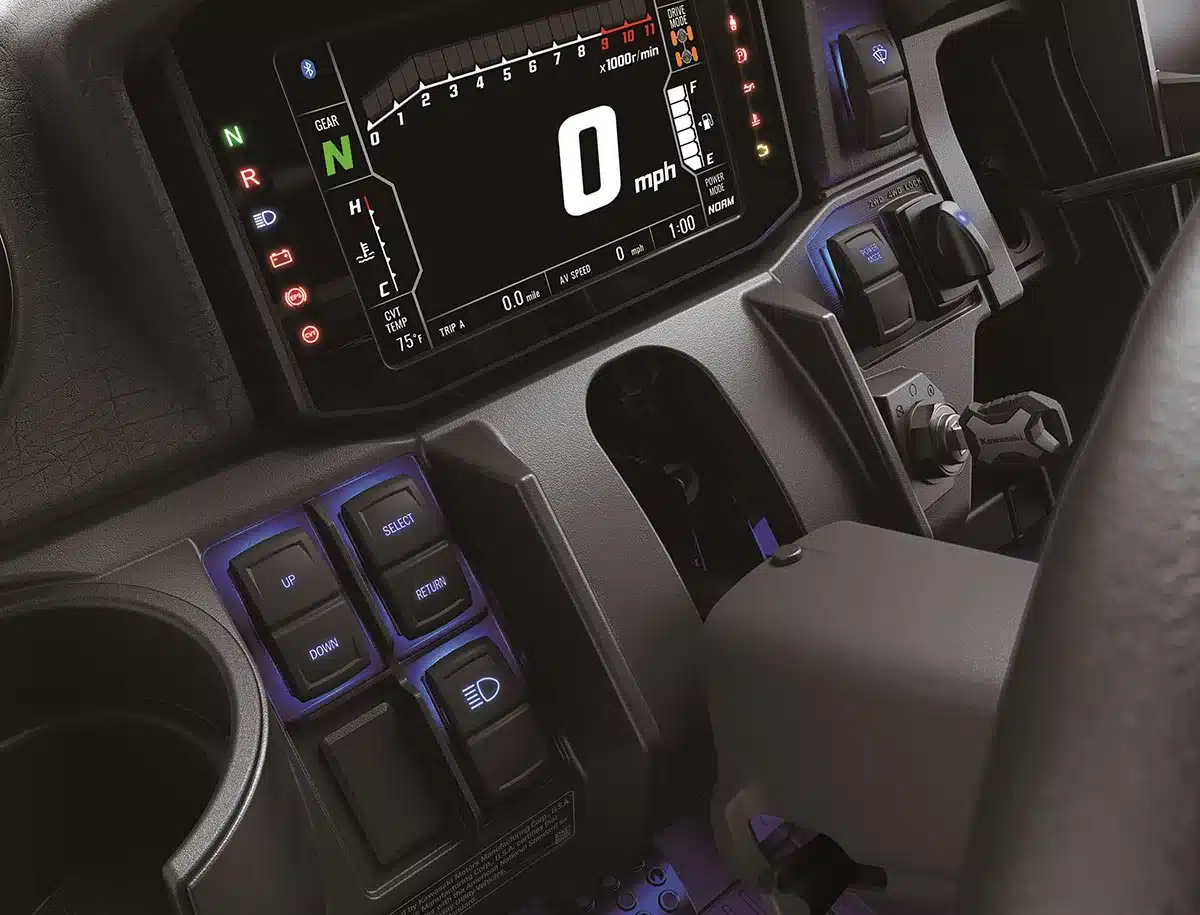
Another great feature, controlled by a switch, is the electrically selectable 4WD, along with front and rear differential locks. This allows you to effortlessly switch between drive systems on the go, adapting to the terrain. With a swift turn of the switch, the system engages seamlessly, putting you in complete control of when 4WD or the 4WD with front and rear differential locks are activated. Locking the front and rear differentials transforms each pair of wheels into a single axle, preventing free-spinning in low-traction situations or when a wheel is suspended in the air. This provides the Ridge XR with true AWD capability, guaranteeing maximum traction when navigating challenging terrains or overcoming obstacles. This machine is in control and moving forward at all times. The rear end doesn’t slide around and the wheels never seem to lose traction.
One more engine feature to discuss is the amount of detail Kawasaki spent on Engine Heat Management. The engine is oriented so that the intake is forward facing (towards the cab) and the exhaust is rear facing (furthest from the cab), so the heat from the exhaust blows straight back and away from the cab. The dual-wall exhaust shield also mitigates heat and reduces cab temperatures, as does the the engine cooling fan. This is located at the right side of the engine, is crank driven, and blows out air out of the engine compartment. All of these added features kept the cab nice and cool. Almost too cool for February in West Virginia, but the HVAC kept us well regulated!


